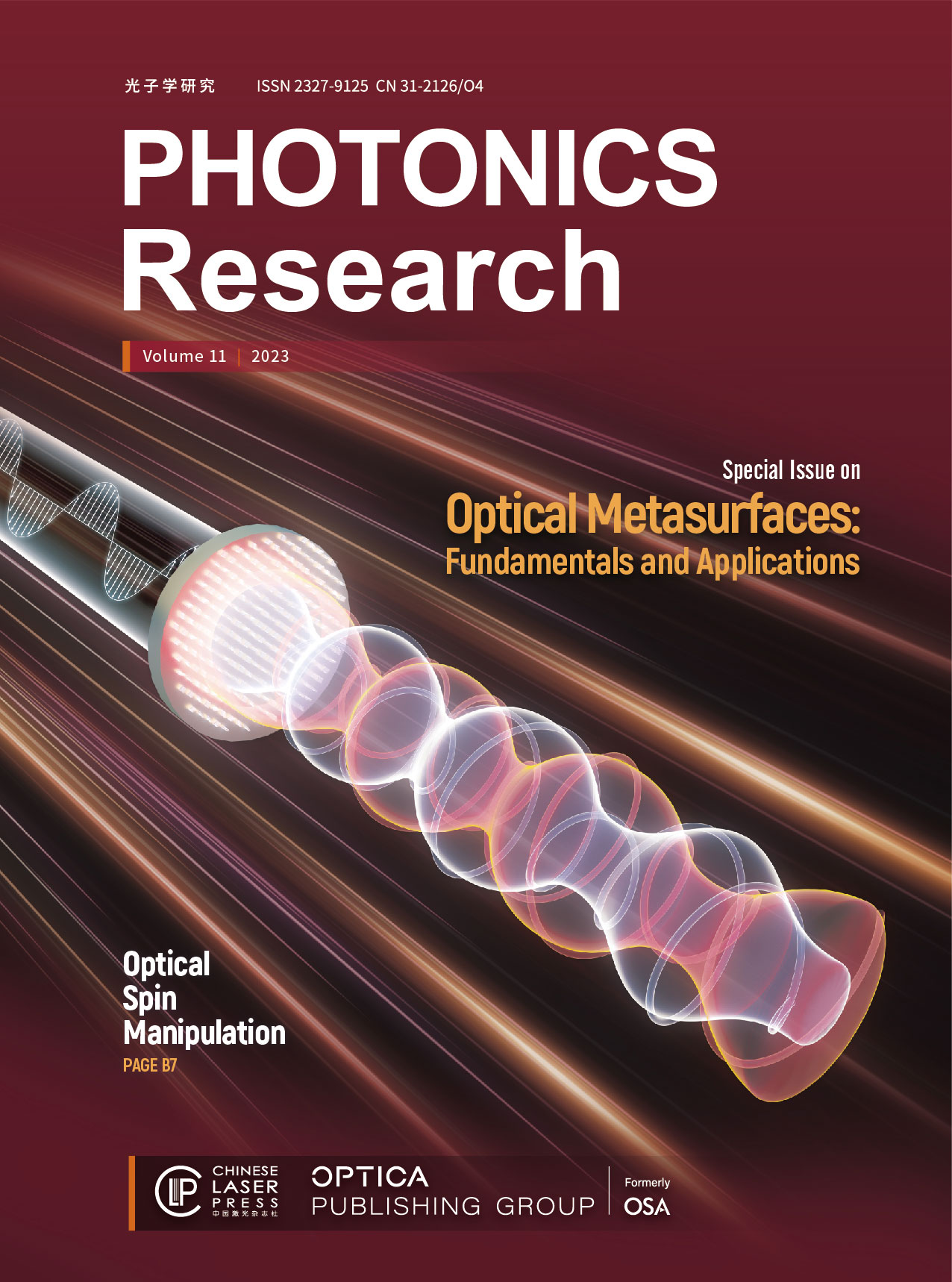电可调光子分子中的高阶 Autler-Townes 分裂
IF 7.2
1区 物理与天体物理
Q1 OPTICS
引用次数: 0
摘要
拂晓画廊模式光学微谐振器是实现相干光原子相互作用光学类似物的一条大有可为的途径,它规避了实验的复杂性。利用耦合光学微谐振器(也称为光子分子),共振场之间的强耦合实现了能级分裂,Autler-Townes 分裂的全光学类似物已被广泛证实。在这里,我们报告了波导耦合微孔二聚体中的 Autler-Townes 分裂特性。通过利用单个环中瑞利和米氏散射体的反向散射诱导耦合,实现了高阶 Autler-Townes 分裂,在多级系统中产生了超模杂化。在使用集成移相器进行共振失谐时,腔内耦合诱导的分裂在零失谐点变得几乎无法区分,在零失谐点,腔间的强耦合抵消了单个环中反向散射强度的不平衡。通过在成熟的硅光子学平台上进行演示,我们的研究成果为耦合介导的 Autler-Townes 分裂建立了一个电可调光子分子框架,为经典和量子态的片上信号生成和处理提供了广阔的前景。本文章由计算机程序翻译,如有差异,请以英文原文为准。
High-order Autler–Townes splitting in electrically tunable photonic molecules
Whispering gallery mode optical microresonators represent a promising avenue for realizing optical analogs of coherent light–atom interactions, circumventing experimental complexities. All-optical analogs of Autler–Townes splitting have been widely demonstrated, harnessing coupled optical microresonators, also known as photonic molecules, wherein the strong coupling between resonant fields enables energy level splitting. Here, we report the characterizations of Autler–Townes splitting in waveguide-coupled microring dimers featuring mismatched sizes. By exploiting backscattering-induced coupling via Rayleigh and Mie scatterers in individual rings, high-order Autler–Townes splitting has been realized, yielding supermode hybridization in a multi-level system. Upon resonance detuning using an integrated phase shifter, intra-cavity coupling-induced splitting becomes almost indistinguishable at the zero-detuning point where the strong inter-cavity coupling counteracts the imbalance of backscattering strengths in individual rings. Through demonstrations on the maturing silicon photonics platform, our findings establish a framework of electrically tunable photonic molecules for coupling-mediated Autler–Townes splitting, offering promising prospects for on-chip signal generation and processing across classical and quantum regimes.
求助全文
通过发布文献求助,成功后即可免费获取论文全文。
去求助
来源期刊

Photonics Research
OPTICS-
CiteScore
13.60
自引率
5.30%
发文量
1325
期刊介绍:
Photonics Research is a joint publishing effort of the OSA and Chinese Laser Press.It publishes fundamental and applied research progress in optics and photonics. Topics include, but are not limited to, lasers, LEDs and other light sources; fiber optics and optical communications; imaging, detectors and sensors; novel materials and engineered structures; optical data storage and displays; plasmonics; quantum optics; diffractive optics and guided optics; medical optics and biophotonics; ultraviolet and x-rays; terahertz technology.
 求助内容:
求助内容: 应助结果提醒方式:
应助结果提醒方式:


